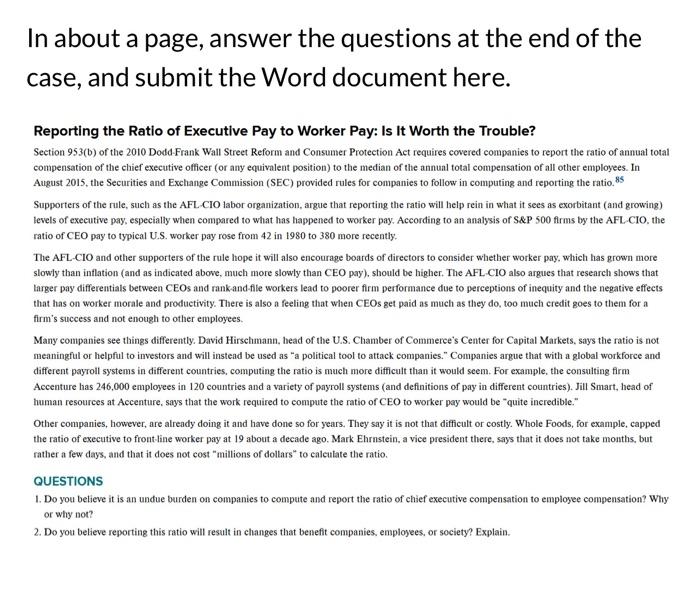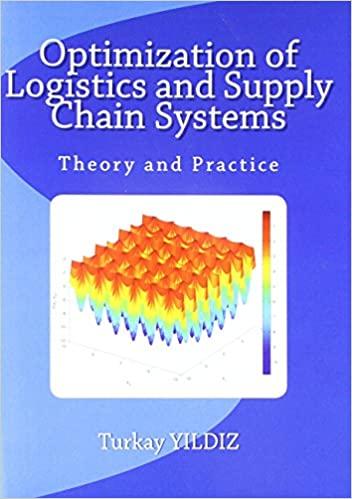Answered step by step
Verified Expert Solution
Question
1 Approved Answer
Help me please :) In about a page, answer the questions at the end of the case, and submit the Word document here. Reporting the
Help me please :) 
In about a page, answer the questions at the end of the case, and submit the Word document here. Reporting the Ratio of Executive Pay to Worker Pay: Is It Worth the Trouble? Section 953(b) of the 2010 Dodd-Frank Wall Street Reform and Consumer Protection Act requires covered companies to report the ratio of annual total compensation of the chief executive officer (or any equivaleat position) to the median of the annual total compensation of all other employees. In August 2015, the Securities and Exchange Commission (SEC) provided rules for companies to follow in computing and reporting the ratio. 85 Supporters of the rule, such as the AFLAIO labor organization, argue that reporting the ratio will help rein in what it sees as exorbitant (and growing) levels of executive pay, especially when compared to what has happened to worker pay. According to an analysis of S\&P 500 firms by the AFL.CIO. the ratio of CEO pay to typical U.S. worker pay rose from 42 in 1980 to 380 more recently. The AFL-CIO and other supporters of the rule hope it will also encourage boards of directors to consider whether worker pay, which has grown more slowly than inflation (and as indicated above, much more slowly than CEO pay), should be higher. The AFL-CIO also argues that research shows that larger pay differentials between CEOs and rankand-file workers lead to poorer firm performance due to perceptions of inequity and the negative effects that has on worker morale and productivity. There is also a feeling that when CEOs get paid as much as they do, too much credit goes to them for a firm's success and not enough to other employees. Many companies see things differently. David Hirschmann, head of the U.S. Chamber of Commerce's Center for Capital Markets, says the ratio is not meaningful or helpful to imvestors and will instead be used as "a political tool to attack companies." Companies argue that with a global workforce and different payroll systems in different countries, computing the ratio is much more difficult than it would seem. For example, the consulting firm Accenture has 246,000 employees in 120 countries and a variety of payroll systems (and definitions of pay in different countries). Jill Smart, head of human resources at Accenture, says that the work required to compute the ratio of CEO to worker pay would be "quite incredible." Other companies, however, are already doing it and have done so for years. They say it is not that difficult or costly. Whole Fooks, for example, capped the ratio of executive to front-line worker pay at 19 about a decade ago. Mark Ehrnstein, a vice president there, says that it does not take months, but rather a few days, and that it does not cost "millions of dollars" to calculate the ratio. QUESTIONS 1. Do you believe it is an undue burden on companies to compute and report the ratio of chief executive compensation to employee compensation? Why or why not? 2. Do you believe reporting this ratio will result in changes that benefit companies, employees, or society? Explain 
Step by Step Solution
There are 3 Steps involved in it
Step: 1

Get Instant Access to Expert-Tailored Solutions
See step-by-step solutions with expert insights and AI powered tools for academic success
Step: 2

Step: 3

Ace Your Homework with AI
Get the answers you need in no time with our AI-driven, step-by-step assistance
Get Started


